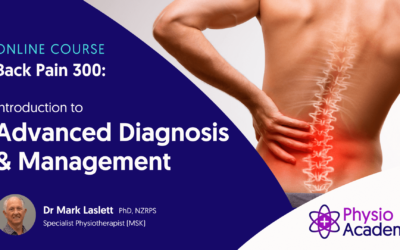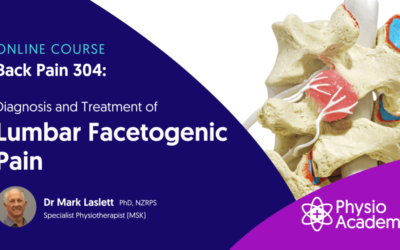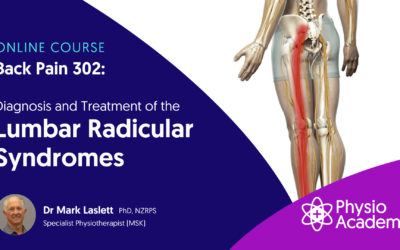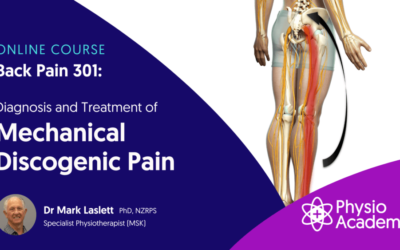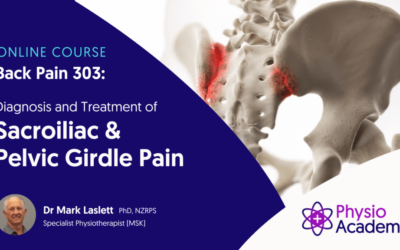Back Pain 201 opens the door for lumbar spine and pelvic diagnostics and treatment selection based on a broad perspective that includes pathoanatomy, neurophysiology and the psychosocial dimensions by teaching you the essentials of a comprehensive clinical history and physical examination.
File Size: 2.371GB.
Format File: 21 MP4, 89 PDF.
Mark Laslett – Back Pain 201 – Advanced Assessment
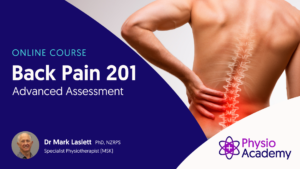
This course is designed for physiotherapists who have some experience and knowledge of assessment and treatment of patients with primary symptoms of back and / or referred lower limb pain. Although my course Back Pain 101 is not a pre-requisite, it is recommended for recent graduates or undergraduates.
Back Pain 201 opens the door for lumbar spine and pelvic diagnostics and treatment selection based on a broad perspective that includes pathoanatomy, neurophysiology and the psychosocial dimensions by teaching you the essentials of a comprehensive clinical history and physical examination.
By the end of this course you will be able to confidently identify:
- Mechanical discogenic pain.
- Radicular syndromes.
- Spinal stenosis.
- Sacroiliac joint pain.
- Hip and buttock pain sources.
Course Structure:
Chapter 1: History and Screening
- Red Flags
- Pain Drawings
- Advanced Clinical History
- Psychosocial Screening Questionnaires
- Observations of Lateral Shift &
- Advanced Neurological Examination
Chapter 2: Centralisation & Directional Preference
- The concept of Centralisation
- Directional Preference
- Implementing Repeated Movement Testing
Chapter 3: Non-Lumbar Pain Sources
- Sacroiliac Joint Pain & Instability Assessment
- Hip and Buttock Pain Assessment
Chapter 4: Putting It All Together
- Efficient physical examination sequence
- Utility of advanced assessment
Learning outcomes:
- Able to identify red flag indicators of serious spinal pathology.
- Understand and interpret pain drawings.
- Make appropriate use of pre-screening health, pain, disability, sensitisation and psychosocial questionnaires.
- Complete a detailed neurologic screening examination to identify radicular pain and radiculopathy.
- Understand the history and concepts of the centralisation and directional preference phenomena.
- Able to conduct a repeated movement / mechanical loading assessment to identify the subcategory for patients whose symptoms show directional preference or centralized.
- Able to carry out reliable and validated sacroiliac joint pain provocations tests and understand interpretation of patient responses.
- Able to carry out a standard orthopaedic medicine assessment for painful disorders of the hip and buttock structures.
- Implement a practical sequence of assessment and testing that is efficient and practical within normal clinical settings.
- Use clinical reasoning to interpret the clinical data derived from the advanced assessment.
Study time: 10 hours approximately + self directed reading
This course builds on Back Pain 101, providing a structured assessment method that will be further expanded upon in the Back Pain 300 series.
Course Features
- Lectures 0
- Quizzes 0
- Duration 10 weeks
- Skill level All levels
- Language English
- Students 177
- Assessments Yes

